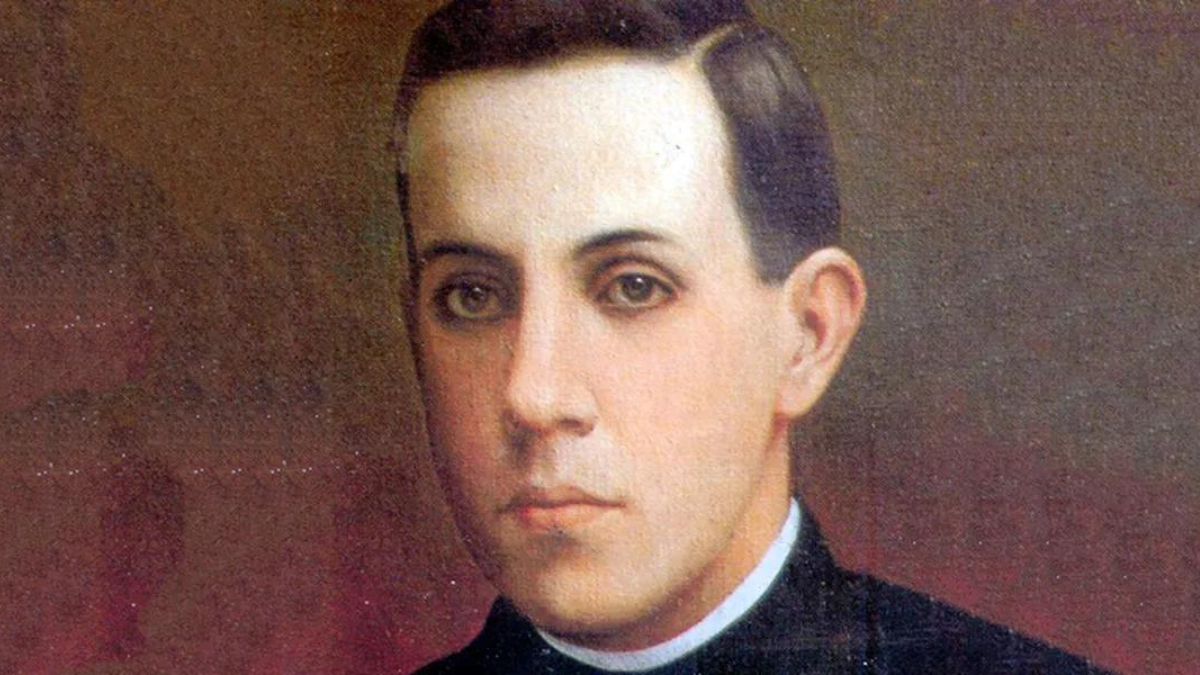Bl. Miguel Pro
| Feast day | April 21 |
| Birth | 1033 |
| Death | 1109 |
In 1915, Miguel was sent to a seminary in Spain, where he remained until 1924, when he went to Belgium for his ordination to the priesthood in 1925. Miguel suffered from a severe stomach problem and after three operations, when his health did not improve, his superiors, in 1926, allowed him to return to Mexico in spite of the grave religious persecution in that country.
The churches were closed and priests went into hiding. Miguel spent the rest of his life in a secret ministry to the sturdy Mexican Catholics. In addition to fulfilling their spiritual needs, he also carried out the works of mercy by assisting the poor in Mexico City with their temporal needs. He adopted many interesting disguises in carrying out his secret mininstry. He would come in the middle of the night dressed as a beggar to baptize infants, bless marriages and celebrate Mass. He would appear in jail dressed as a police officer to bring Holy Viaticum to condemned Catholics. When going to fashionable neighboorhoods to procure for the poor, he would show up at the doorstep dressed as a fashionable businessmam with a fresh flower on his lapel. His many exploits could rival those of the most daring spies. In all that he did, however, Fr. Pro remained obedient to his superiors and was filled with the joy of serving Christ, his King.
Falsely accused in the bombing attempt on a former Mexican president, Miguel became a wanted man. Betrayed to the police, he was sentenced to death without the benefit of any legal process.
On the day of his execution, Fr. Pro forgave his executtioners, prayed, bravely refused the blindfold and died proclaiming, “Viva Cristo Rey”, “Long live Christ the King!”
Information courtesy of ProVision and Brother Gerald Muelle
In 1915, Miguel was sent to a seminary in Spain, where he remained until 1924, when he went to Belgium for his ordination to the priesthood in 1925. Miguel suffered from a severe stomach problem and after three operations, when his health did not improve, his superiors, in 1926, allowed him to return to Mexico in spite of the grave religious persecution in that country.
The churches were closed and priests went into hiding. Miguel spent the rest of his life in a secret ministry to the sturdy Mexican Catholics. In addition to fulfilling their spiritual needs, he also carried out the works of mercy by assisting the poor in Mexico City with their temporal needs. He adopted many interesting disguises in carrying out his secret mininstry. He would come in the middle of the night dressed as a beggar to baptize infants, bless marriages and celebrate Mass. He would appear in jail dressed as a police officer to bring Holy Viaticum to condemned Catholics. When going to fashionable neighboorhoods to procure for the poor, he would show up at the doorstep dressed as a fashionable businessmam with a fresh flower on his lapel. His many exploits could rival those of the most daring spies. In all that he did, however, Fr. Pro remained obedient to his superiors and was filled with the joy of serving Christ, his King.
Falsely accused in the bombing attempt on a former Mexican president, Miguel became a wanted man. Betrayed to the police, he was sentenced to death without the benefit of any legal process.
On the day of his execution, Fr. Pro forgave his executtioners, prayed, bravely refused the blindfold and died proclaiming, “Viva Cristo Rey”, “Long live Christ the King!”
Information courtesy of ProVision and Brother Gerald Mueller.
Views: 0
